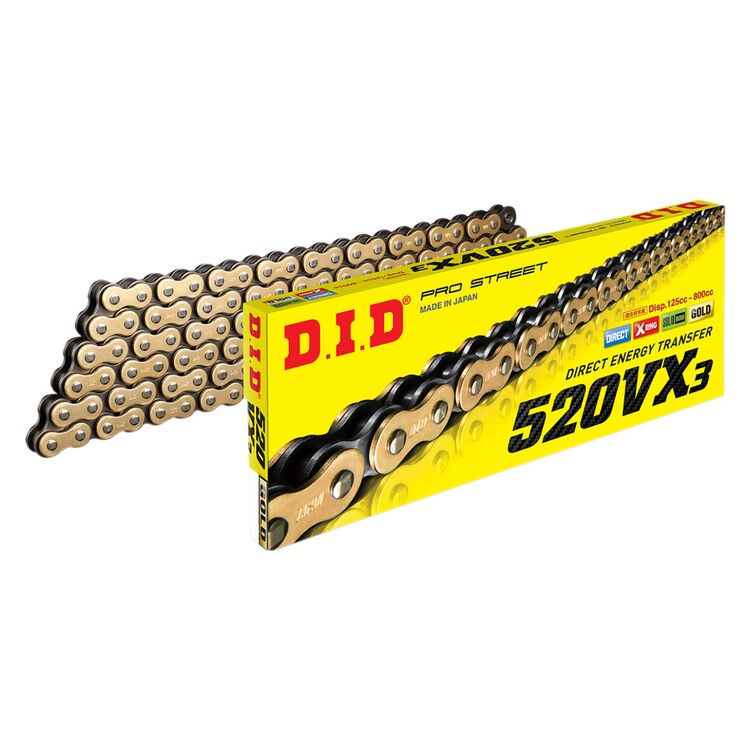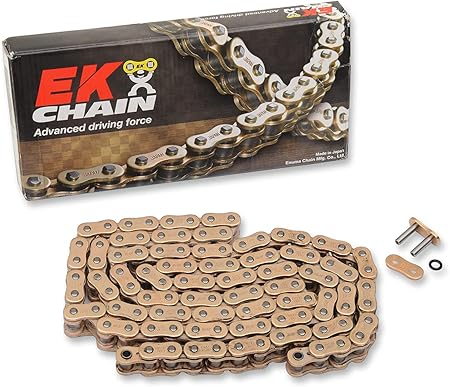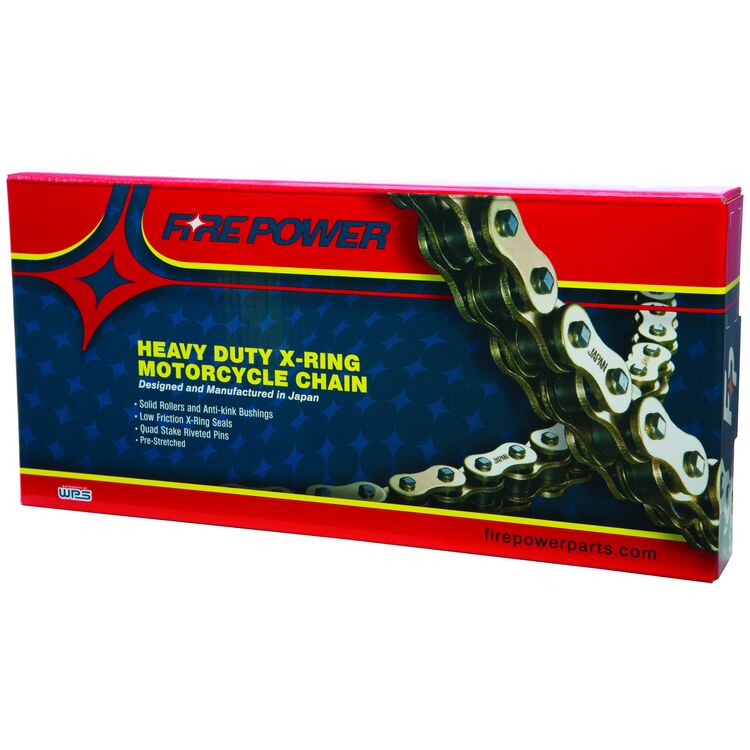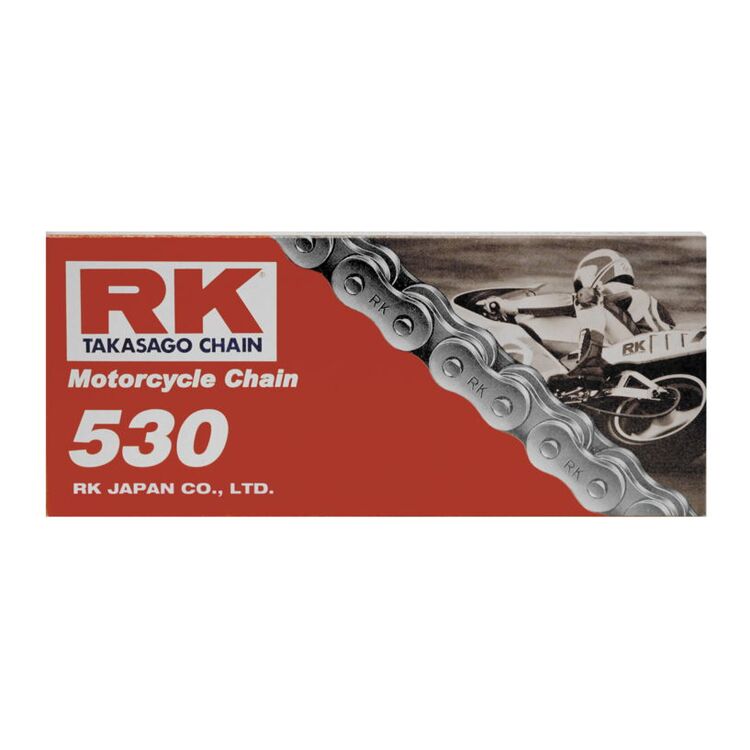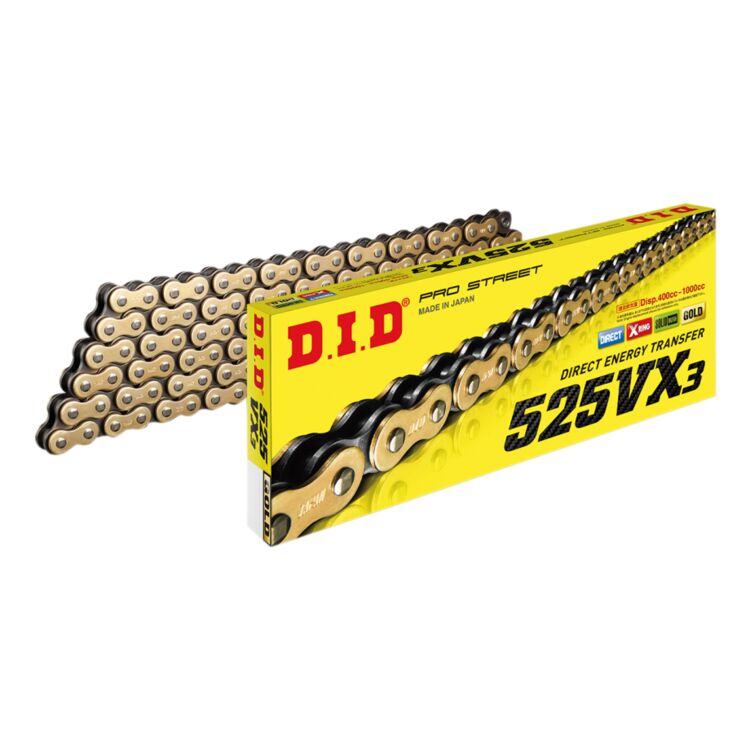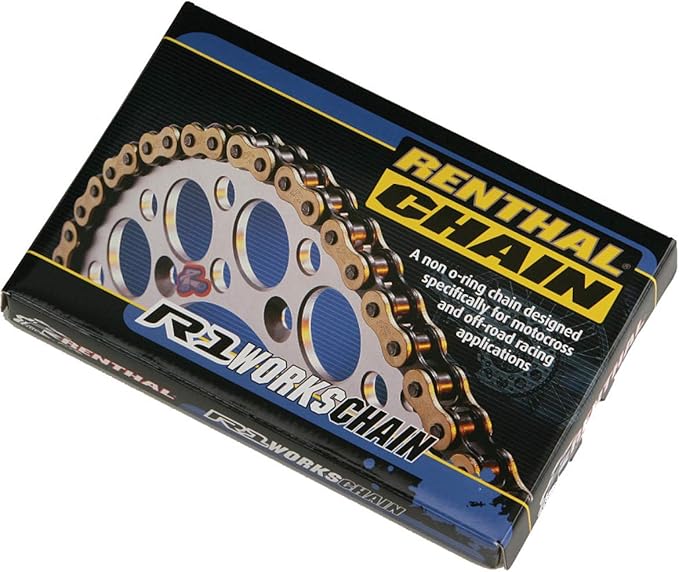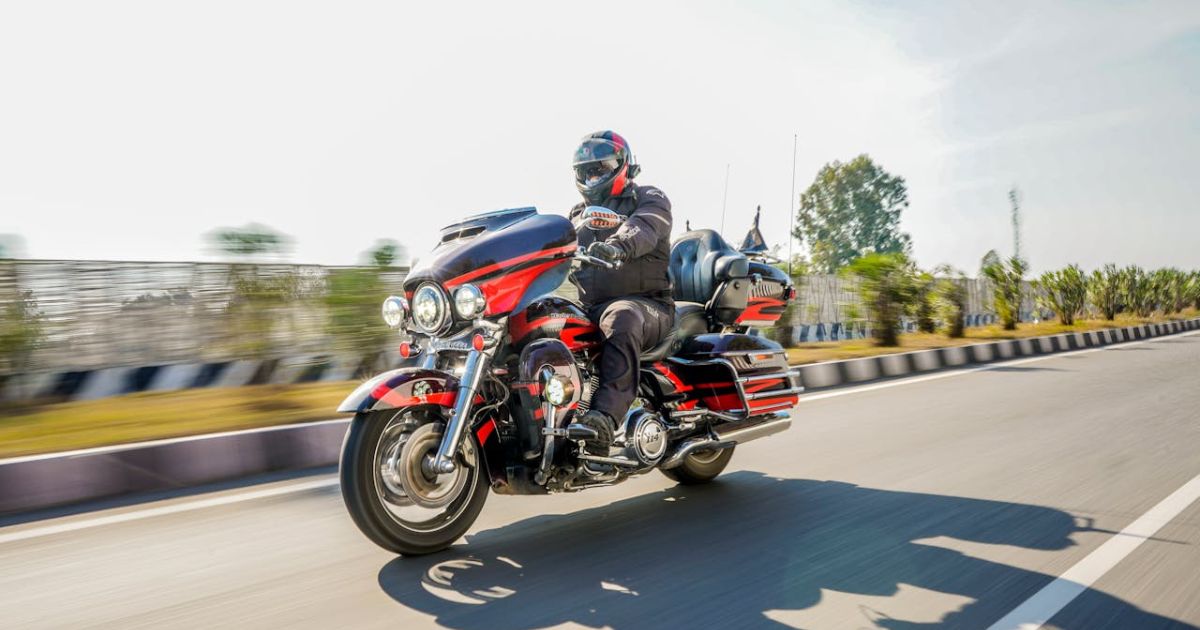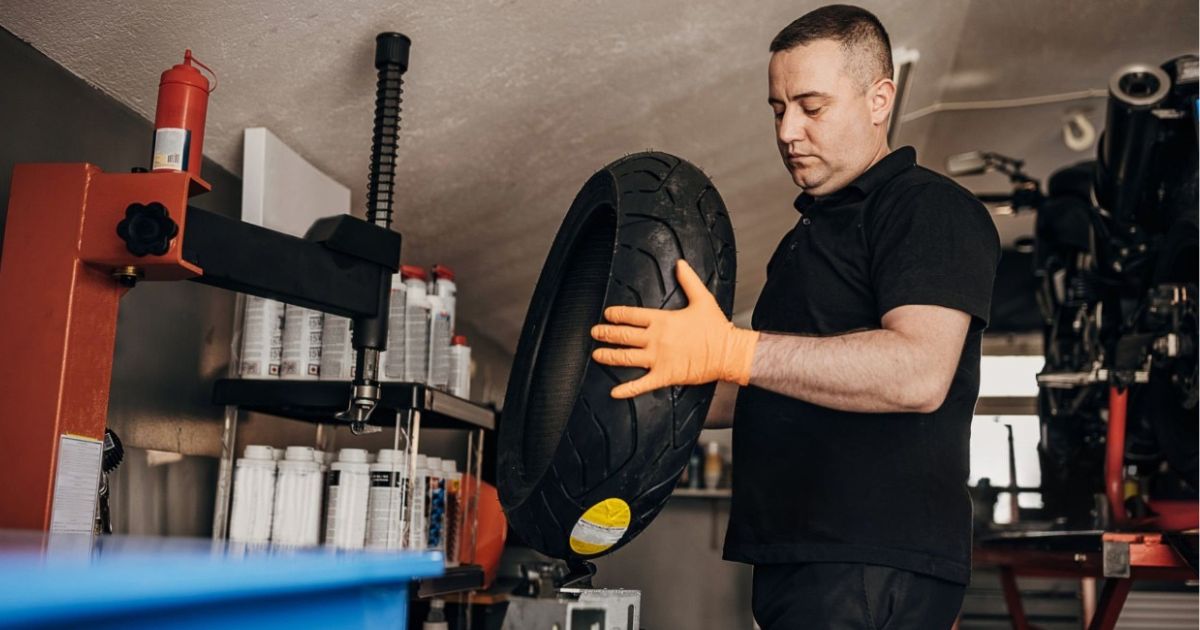
The Best Motorcycle Chains for Every Type of Rider in 2025
left for contents
Riders talk endlessly about exhausts, ECU tunes and horsepower numbers, but there’s one part that literally keeps your bike moving – the chain. Pick the wrong one and you’re throwing away power and money. Pick the right one and your bike feels tighter, smoother and faster.
By the end of this guide you’ll know exactly which chain fits your riding style and why most people are buying the wrong thing.
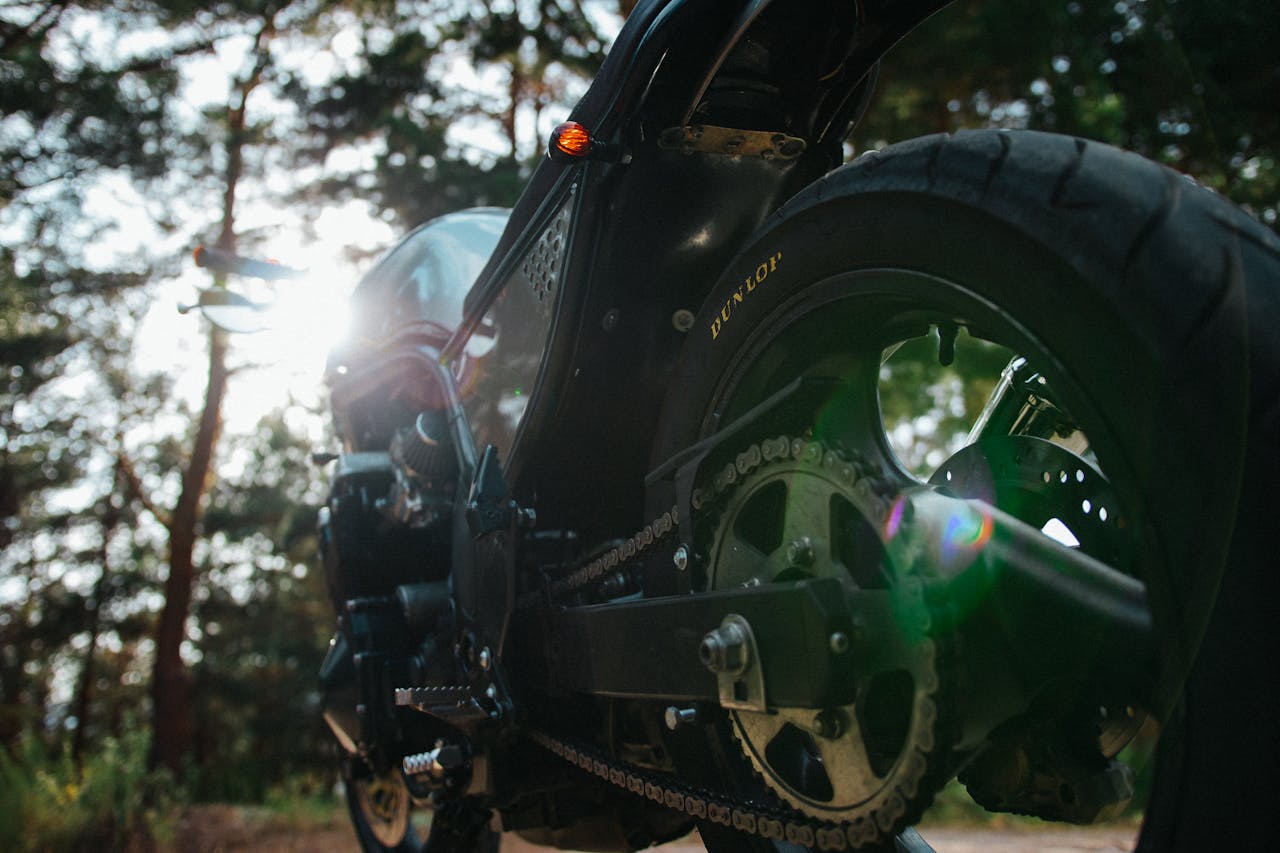
Before we jump into the picks, here are a few statements that may raise an eyebrow:
- A fancy pipe won’t make up for a poorly maintained chain. Friction losses steal horsepower long before an aftermarket exhaust can give it back.
- Most riders over‑lubricate their chains. Too much goo attracts grit and actually shortens chain life rather than extending it.
- “Bigger is better” doesn’t apply to chains. Running a 525 pitch when your bike calls for a 520 just adds rotating mass without improving strength.
- Sealed chains still need cleaning. Those rubber rings only protect the rollers; the outer plates still need love.
Sound counter‑intuitive? Keep reading. We’ll explain why these claims are true and how choosing the right chain makes your bike feel like new.
Which Chain Suits Which Rider?
Chains come in different pitches, sealing technologies and materials. Your choice depends on power output, riding style and even the environment you ride in.
Here’s a quick primer on why you might pick one style over another:
- Non‑sealed chains are light, cheap and transfer power efficiently. They suit small‑displacement bikes and racing where every bit of drag matters. The trade‑off is frequent maintenance and a shorter lifespan.
- O‑ring chains use rubber O‑rings between the inner and outer plates to keep grease in and grit out. They last much longer than non‑sealed chains and require less frequent lubrication. Perfect for commuting or muddy rides where maintenance time is limited.
- X‑ring (or VX‑ring) chains improve on the O‑ring design by twisting the seal into an X shape. This creates two sealing surfaces with less friction and better grease retention. They are ideal for performance street bikes and long‑distance touring because they last longer and rob less power.
- ZX‑ring chains are EK’s advanced version of the X‑ring. They seal better yet still roll freely, making them suitable for high‑displacement sportbikes and even some custom builds.
As a general rule, follow your owner’s manual for pitch (520, 525 or 530) and upgrade to an X-ring or ZX-ring chain if you ride hard, tour long distances or simply hate fiddling with your chain. If you just want the best of the best, start with our top three picks below—chains trusted by riders for performance, durability, and value.
Balances strength, smoothness, and longevity—ideal for daily street use up to 800 cc. | Handles big-bore power with minimal drag—perfect for sportbike riders who demand reliability. | Tough, affordable, and easy to install—built to withstand heavy daily mileage without fuss. |
|
|
|
|
|
|
Balances strength, smoothness, and longevity—ideal for daily street use up to 800 cc.
- Lower friction means stronger throttle response
- Longer chain life via patented X-ring seals
- Rigid construction resists flex under load
- Easy-to-use clip or rivet master link options
- Requires proper alignment & maintenance to stay optimal
- Clip masters may need occasional torque checks after bedding-in
Handles big-bore power with minimal drag—perfect for sportbike riders who demand reliability.
- Excellent strength for high-torque engines
- ZX-ring seals extend service life
- Lightweight design improves response
- Secure rivet master link for reliability
- Needs a chain tool for installation
- Colored finish can fade over time
Tough, affordable, and easy to install—built to withstand heavy daily mileage without fuss.
- Hardened, shot-peened components boost durability
- Quad-stake riveted pins resist loosening
- Pre-stretched to reduce early adjustments
- Strong tensile capacity for high load conditions
- Only supplied with a clip-style master link
- May need more frequent slack checks under heavy loads
Now let’s dive into the products that stand out in 2025.
Best Non‑Sealed Chain for Small Bikes – RK M530 Standard Chain
If you ride a 400cc or smaller street bike and want to stretch every dollar, RK’s M530 standard chain is a gem. This is a no‑nonsense, non‑sealed chain built for durability and performance. It’s lighter and cheaper than sealed designs, which makes a small engine feel more lively. RK upgraded this generation with quad‑riveted pins that increase strength and stability under stress. The cold‑forged solid bushings and special anti‑wear coating boost chain life by 40 % compared to older RK designs.
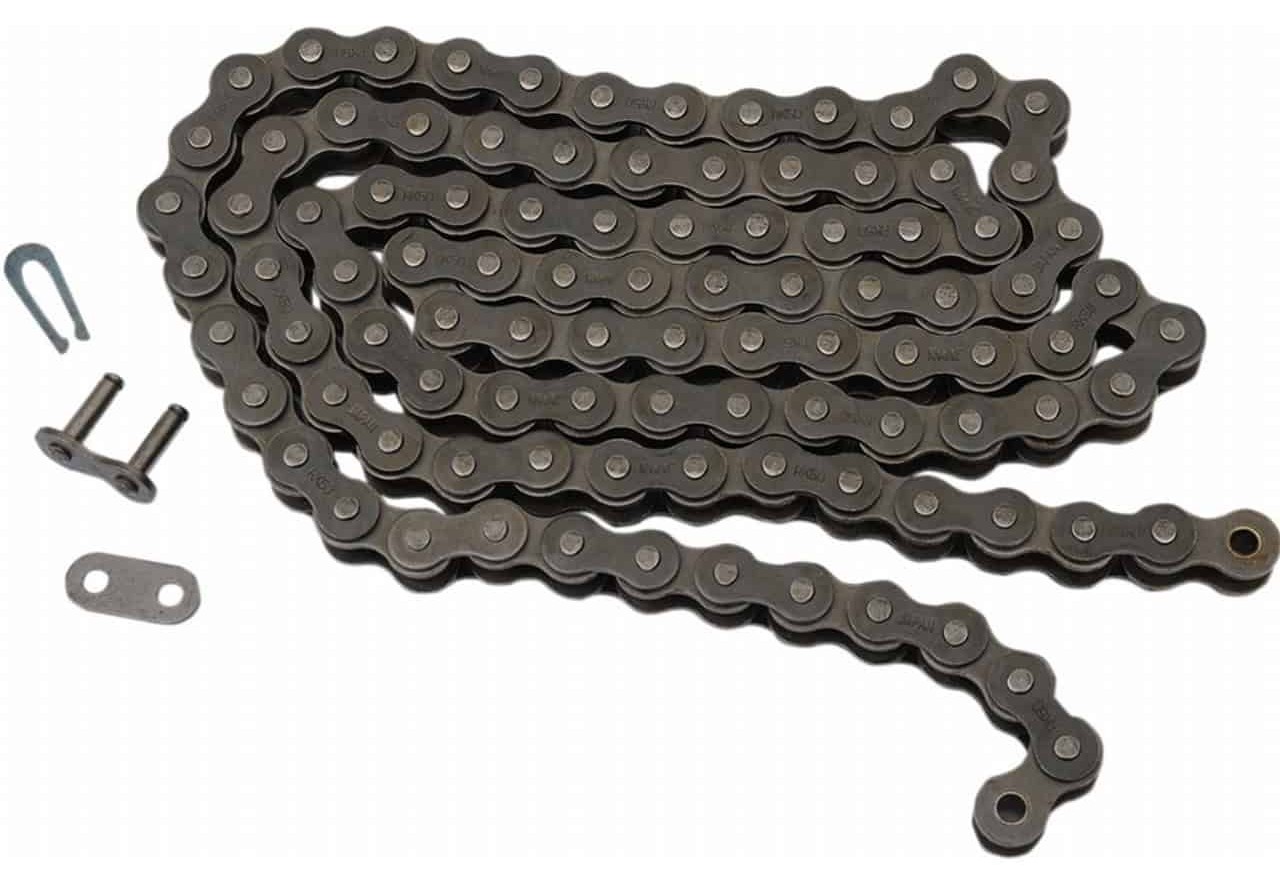
Why It Works
On bikes that originally came with a non‑sealed chain, an O‑ring or X‑ring swap can add unnecessary drag. The M530 stays true to the original spec while giving you more life and strength. A tensile strength of 6,800 lbs and a max street displacement rating of 400 cc mean it’s perfect for lightweight standards, vintage bikes and 250‑400cc commuters. The chain is pre‑treated with RK’s wear‑resistant coating so you get durability without the expense of a sealed chain.
A durable non-sealed 530 chain engineered with quad-riveted pins for added strength and smooth power delivery, ideal for lightweight to mid-weight bikes.
- High tensile rating ensures reliable strength
- Simple clip master link for easy installation
- Lightweight, ideal for small engines
- Low maintenance complexity compared to O-ring designs
- Requires frequent cleaning and lubrication
- Not ideal for high-horsepower or torque-heavy use
Downsides and Silver Lining
Because it’s non‑sealed, it needs cleaning and lubing more often. That sounds like a pain, but there’s an upside: regular cleaning forces you to inspect your drivetrain frequently. You’ll catch worn sprockets or alignment problems early, saving money in the long run. If you absolutely despise chain maintenance, jump ahead to one of the sealed options.
Best All‑Round X‑Ring Chain for Mid‑Size Bikes – D.I.D 520VX3 X‑Ring Chain
The 520VX3 is the benchmark chain for bikes up to about 800 cc, and for good reason. D.I.D’s patented X‑ring reduces friction and improves sealing by twisting the ring into an X shape; it creates two smaller sealing surfaces, less drag and better grease retention. On the VX3 this translates to smoother handling, reduced power loss and quicker throttle response. That’s exactly what you want on a 300‑800 cc machine, whether you’re carving twisties or commuting.
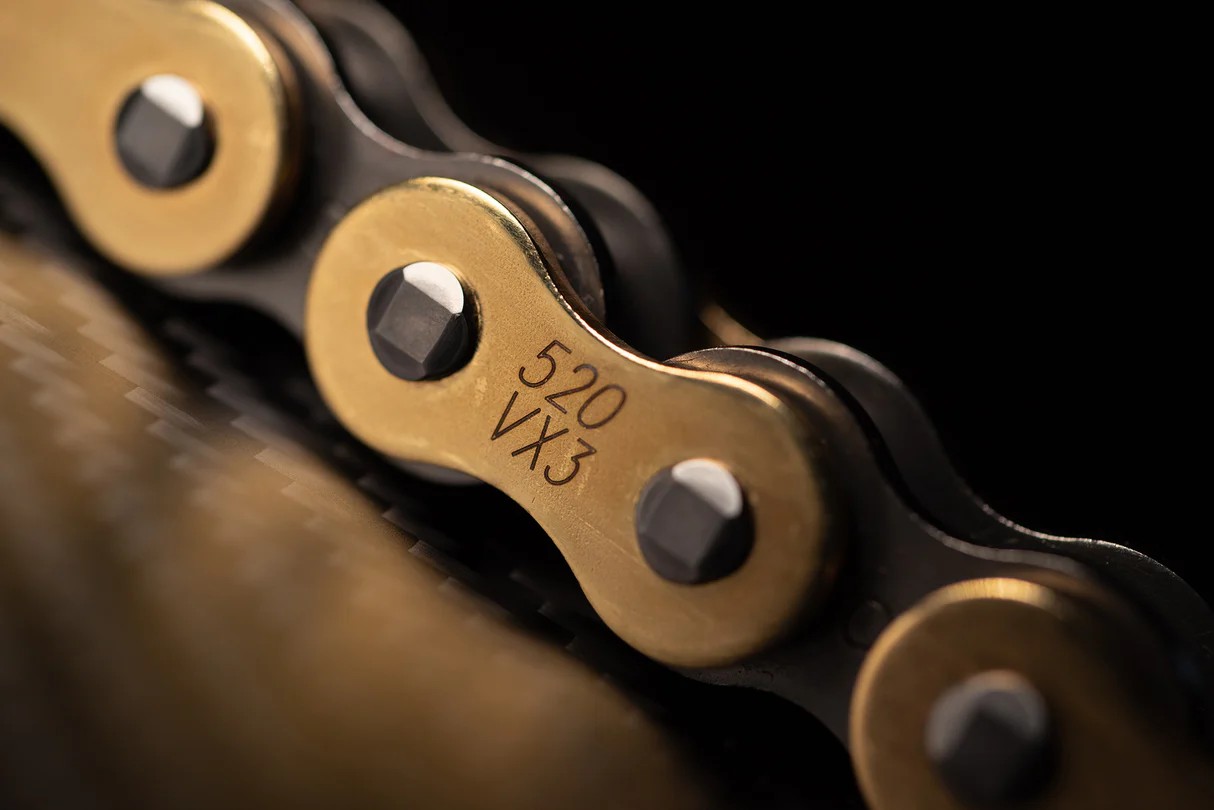
Why It Works
With an average tensile strength of 8,210 lbs and a weight of 3.35 lbs per 100 links, the VX3 strikes a perfect balance between strength and rotating mass. It’s sturdy enough for spirited rides but light enough to keep your bike’s handling sharp. The clip‑type master link makes installation easy, and because the chain is pre‑stretched at the factory there’s less bedding‑in adjustment.
On the road this chain simply feels smooth. That reduced friction means less chain snatch when you roll on and off the throttle. The improved sealing helps it last roughly twice as long as equivalent O‑ring chains, so you’re not swapping chains every season.
A high-performance X-ring chain that cuts friction and boosts longevity—32% longer life over previous VO series—ideal for spirited street and mid-cc bikes.
- Lower friction means stronger throttle response
- Longer chain life via patented X-ring seals
- Rigid construction resists flex under load
- Easy-to-use clip or rivet master link options
- Requires proper alignment & maintenance to stay optimal
- Clip masters may need occasional torque checks after bedding-in
Downsides and Alternatives
The only real downside is cost; X‑ring chains are more expensive than their O‑ring cousins. If budget is your primary concern and you don’t mind more frequent maintenance, the RK M530 above or an O‑ring chain will save you some cash. Also note that the VX3’s clip master link isn’t interchangeable with older D.I.D V or VM chains, so if you’re mid‑tour and need a spare link you’ll want to bring the correct one.
Best X‑Ring Chain for Liter Bikes – D.I.D 525VX3 X‑Ring Chain
If you ride a 600–1000 cc sportbike or a heavyweight adventure machine, the 525VX3 is the chain you’ve probably seen recommended. It’s essentially a beefed‑up version of the 520VX3, offering greater rigidity for bikes that put down serious torque. The VX3’s X‑ring seals reduce friction, and the engineering upgrades make it the strongest D.I.D chain available for street use.
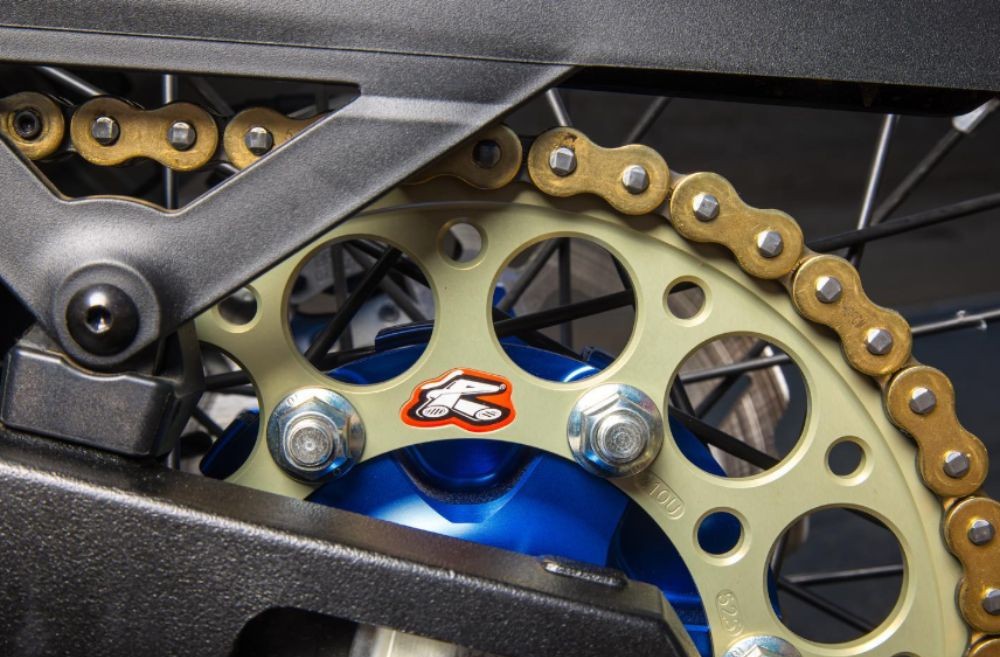
Why It Works
The 9,980 lb tensile strength and 4.09 lbs per 100 links weight give you the confidence to hammer the throttle without worrying about stretching or snapping. D.I.D pre‑stretches every 525VX3 at the factory so you won’t be constantly adjusting chain slack in the first 500 km. The rivet‑type master link is secure and recommended for bikes putting down serious horsepower.
Although this chain is heavier than a 520‑pitch, it’s still lighter than stepping up to a full 530 chain. Many liter‑bike riders appreciate the compromise: enough strength to handle 150 hp plus, but not so much extra mass that it affects acceleration. For touring riders who load their bikes with luggage and occasionally ride two‑up, the 525VX3’s additional reserve strength is cheap insurance.
A high-strength X-ring chain that delivers smoother throttle response and up to 41% longer life over prior models.
- Greater rigidity reduces flex and improves handling
- Patented X-ring seals enhance durability and life
- Pre-stretched construction cuts break-in time
- Rivet or clip master link options for flexibility
- Heavier than smaller-pitch chains (per 100 links)
- Clip master link may need occasional re-torquing after bedding in
Downsides and Alternatives
Installation takes a bit more effort because you need to rivet the master link rather than clip it. That’s a safety measure rather than a flaw, but if you’re not comfortable with a chain tool you may prefer an easier install. Cost is again higher than an O‑ring chain, so budget‑minded riders can look at Fire Power’s FPX chain below for a slightly cheaper alternative.
Best ZX‑Ring Chain for High‑Performance Street Bikes – EK 520 ZVX3 Chain
EK’s 520 ZVX3 steps the sealing game up with a ZX‑ring design. Think of this as the X‑ring’s hyperactive cousin: it delivers even better sealing, reduces drag and can handle huge power. This chain is rated for street bikes up to 1,200 cc, yet thanks to weight‑reducing holes it only weighs 3.97 lbs per 100 links. Tensile strength is 9,400 lbs, putting it right in the sweet spot between the 520VX3 and 525VX3.
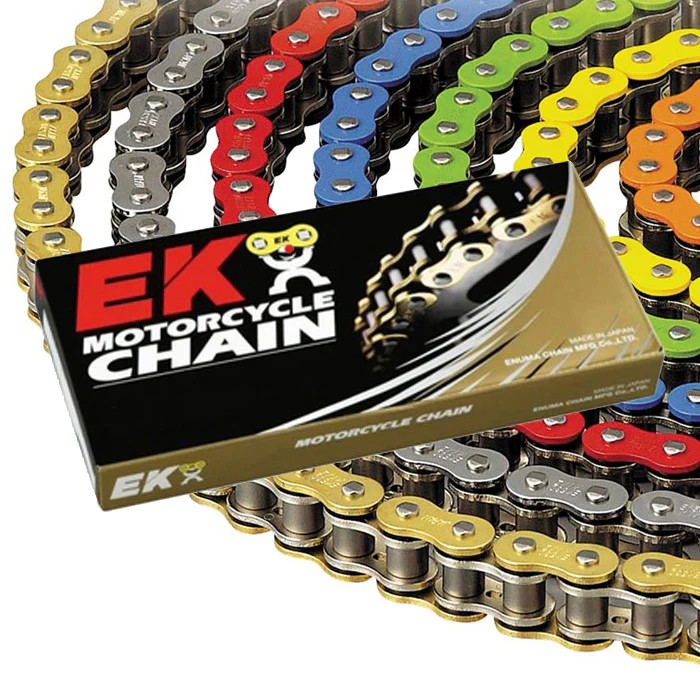
Why It Works
The ZVX3 is a favorite among riders who’ve added big‑bore kits, turbochargers or simply want bulletproof drivetrain reliability. Its ZX‑ring seals offer excellent grease retention and minimal friction, which you can feel as a silky smooth throttle response. Color options abound – natural, gold, chrome and even blue, green or purple – so you can match your chain to your bike’s vibe.
What really sets this chain apart is the combination of high power rating and low weight. Many riders running 1000 cc sportbikes choose a 525 chain out of fear of breaking a 520, but the ZVX3 shows that a well‑designed 520 can handle serious torque. The included rivet‑type master link is rock‑solid, and the chain arrives pre‑stretched.
A high-performance ZX-ring chain built for bikes up to 1,200 cc, delivering smooth power transfer, low friction, and long-lasting durability.
- Excellent strength for high-torque engines
- ZX-ring seals extend service life
- Lightweight design improves response
- Secure rivet master link for reliability
- Needs a chain tool for installation
- Colored finish can fade over time
Downsides and Alternatives
Because it’s built to withstand huge power, it’s overkill for bikes under 600 cc. You’ll pay a premium for those ZX‑rings and anodized side plates. If you don’t need the power rating or bling factor, the 520VX3 offers similar smoothness at a lower cost. Also, some colors may be out of stock; if your favorite hue isn’t available, the black/gold or natural options usually are.
Best Heavy‑Duty X‑Ring Chain for Touring and Commuting – Fire Power FPX 525 X‑Ring Chain
Not everyone needs the fanciest chain; some riders just want something tough that will shrug off daily abuse. Fire Power’s FPX 525 X‑Ring chain hits that sweet spot. It combines hardened and shot‑peened components with quad‑stake riveted pins to maximize durability. The long‑lasting X‑ring seals keep internal grease in place, and every chain comes with a clip‑style master link for easy installation.

Why It Works
The FPX’s 9,000 lb tensile strength and 525 pitch give it the muscle to handle everything from a Yamaha MT‑09 to a fully loaded Harley‑Davidson. Its maximum street displacement rating of 1,000 cc and 750 cc off‑road rating make it versatile for ADV bikes and big cruisers alike. Because the chain is manufactured in Japan, quality control is high and there’s a consistency in the pins and plates you don’t always get in budget chains.
Unlike many heavy‑duty chains, the FPX uses a clip rather than a rivet master link. That makes backyard installation straightforward. If you prefer the security of a rivet link, you can always purchase one separately. Riders have reported smooth operation and minimal stretch during the first thousand miles, which is impressive given the price point.
A robust 525 X-ring chain designed to resist wear under heavy commuting or touring use, delivering reliable power transfer with minimal fuss.
- Hardened, shot-peened components boost durability
- Quad-stake riveted pins resist loosening
- Pre-stretched to reduce early adjustments
- Strong tensile capacity for high load conditions
- Only supplied with a clip-style master link
- May need more frequent slack checks under heavy loads
Downsides and Alternatives
Some riders prefer rivet master links on high‑powered bikes; if that’s you, consider the D.I.D 525VX3 or EK ZVX3, both of which use rivet links. The FPX is also slightly heavier than the EK ZVX3 chain. On the plus side, its price is lower, and for touring or commuting bikes the difference in weight is barely noticeable.
Best Lightweight Racing Chain – Renthal R1 520 Works Chain
When every fraction of a second matters, racers ditch sealed chains to reduce drag. The Renthal R1 520 Works chain is a non‑O‑ring chain designed specifically for motocross and racing applications. It has an ultra‑high 7,644 lb average tensile strength thanks to shot‑peened alloy steel side plates and chromized bearing pins. Chamfered inner links reduce the chance of the chain derailing when you land a jump, and extended bushings cut down on friction and heat build‑up.
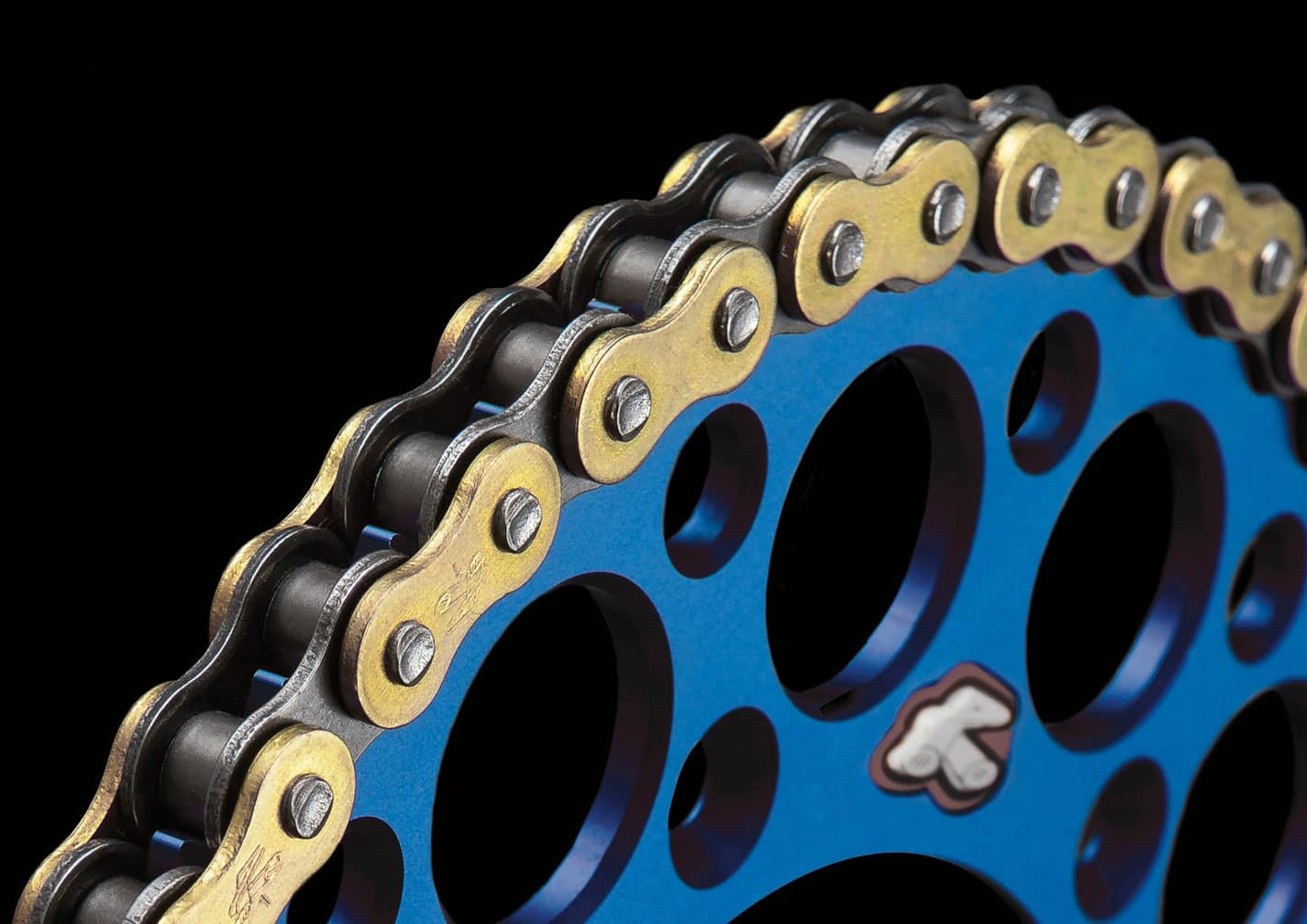
Why It Works
For MX riders, chain drag is a bigger enemy than ultimate longevity. The R1’s lack of sealing rings means less rotating mass and minimal friction. Because there are no O‑rings to compress, the chain transfers more of your engine’s power directly to the rear wheel. The gold‑coloured side plates aren’t just for looks; they resist corrosion and make inspection easier when you’re quickly checking chain wear at the track.
Renthal recommends the R1 for two‑stroke bikes up to 250 cc and four‑stroke bikes up to 450 cc. That covers most modern MX machines. If you race a bigger bike or do dual‑sport riding, stick to a sealed chain like the D.I.D VX3 or EK ZVX3. The clip‑style master link makes quick gearing changes simple between motos.
A race-oriented, non-O-ring 520 chain built to excel in motocross environments, offering high strength, low drag, and durability under harsh conditions.
- Shot-peened plates deliver high impact resistance
- Chamfered inner links reduce chances of derailment
- Chromized pins resist corrosion and wear
- Extended bushings reduce internal friction
- Requires frequent maintenance since it’s non-sealed
- Initial stretch is common during break-in period
Downsides and Alternatives
Non‑sealed chains wear faster and need lubrication after every moto. For a dedicated race bike that’s not a problem – you probably clean and re‑oil your chain after every ride anyway. For dual‑sport or trail riders who just want a lighter feel, the extra maintenance can be a hassle. In that case, consider the D.I.D 520VX3; its X‑ring design reduces drag while still offering good longevity.
Comparison Table
Below is a side‑by‑side snapshot of the chains discussed. Figures like tensile strength and weight per 100 links come directly from manufacturer specifications so you can compare at a glance.
| Chain | Best For | Chain Type | Pitch | Tensile Strength | Weight (per 100 links) | Notable Features |
|---|---|---|---|---|---|---|
| RK M530 Standard Chain | Small displacement street bikes (≤400 cc) | Non‑sealed | 530 | 6,800 lbs | N/A | Quad‑riveted pins; cold‑forged bushings; wear‑resistant coating |
| D.I.D 520VX3 X‑Ring | General street bikes up to 800 cc | X‑ring sealed | 520 | 8,210 lbs | 3.35 lbs | Greater rigidity for smoother handling and reduced power loss |
| D.I.D 525VX3 X‑Ring | Sportbikes and touring bikes up to 1000 cc | X‑ring sealed | 525 | 9,980 lbs | 4.09 lbs | Highest strength D.I.D street chain; pre‑stretched; rivet master link |
| EK 520 ZVX3 ZX‑Ring | High‑performance street bikes up to 1,200 cc | ZX‑ring sealed | 520 | 9,400 lbs | 3.97 lbs | Weight‑reducing holes; colour options; rivet master link |
| Fire Power FPX 525 X‑Ring | Commuting, touring, ADV up to 1000 cc | X‑ring sealed | 525 | 9,000 lbs | N/A | Hardened & shot‑peened components; clip master link; made in Japan |
| Renthal R1 520 Works | Motocross & racing up to 450 cc | Non‑O‑ring | 520 | 7,644 lbs | N/A | Lightweight; shot‑peened side plates; chamfered links; chromized pins |
Note: The FPX and Renthal chains do not list weight per 100 links, but both are considered lightweight for their categories.
Buying Guide
Choosing a chain shouldn’t feel like a gamble. Use the guidelines below to match a chain to your bike and riding style.
1. Match the Pitch
Chains come in standardized pitches like 420, 428, 520, 525 and 530. The numbers roughly correspond to link size and width. Always follow your owner’s manual. Moving up a size (for example, from 520 to 525) increases tensile strength but also adds weight. Unless you’ve significantly increased engine power, stick with the factory pitch. A heavier chain slows acceleration and stresses the transmission for no tangible benefit.
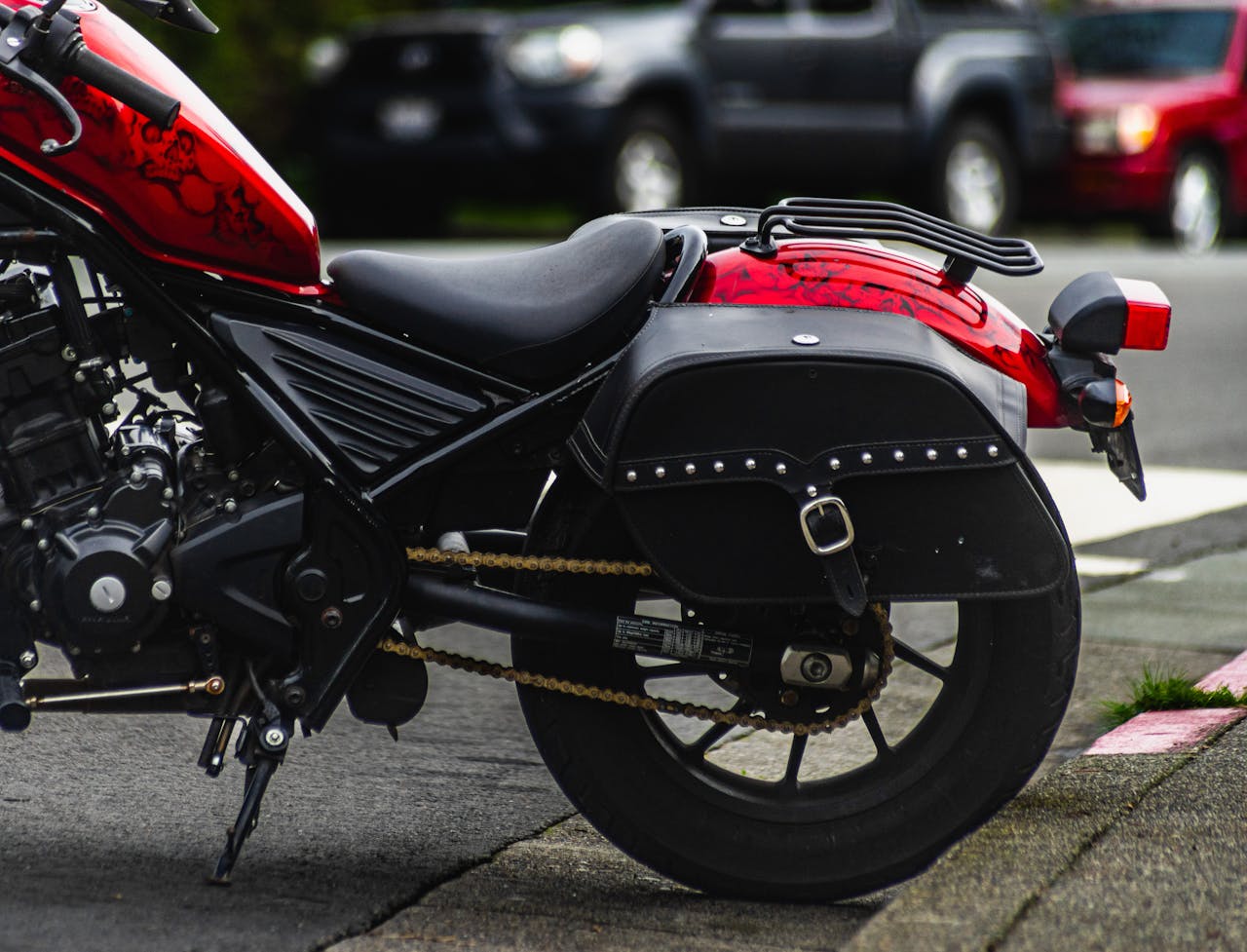
2. Choose Your Seal Type
- Non‑sealed chains are best for small bikes and racing. They deliver maximum power transfer but need cleaning and lubrication after almost every ride.
- O‑ring chains seal lubricant inside the rollers and keep grit out, extending life and reducing maintenance. Good for commuting and casual riding.
- X‑ring chains take things further by twisting the seal to reduce friction and improve grease retention. They last roughly twice as long as O‑ring chains, making them ideal for touring and sport riding.
- ZX‑ring chains are EK’s premium option, offering high power ratings with low drag. Choose this if you ride a big‑bore sportbike or have added performance mods.
3. Consider Tensile Strength
Tensile strength is the maximum load a chain can handle before breaking. It’s expressed in pounds; more isn’t always better if you don’t need it. For example, a 600 cc sportbike is perfectly happy with an 8,000 lb chain. Going up to a 12,000 lb chain adds weight without any real benefit. Use our comparison table to gauge appropriate strength.
4. Think About Weight
Rotational weight affects acceleration and handling. A lighter chain makes the bike feel more responsive, especially at the rear wheel. Racing chains like the Renthal R1 prioritize low weight, while heavy‑duty chains trade a few ounces for durability. When comparing sealed chains, note the weight per 100 links to see how much spinning mass you’re adding.
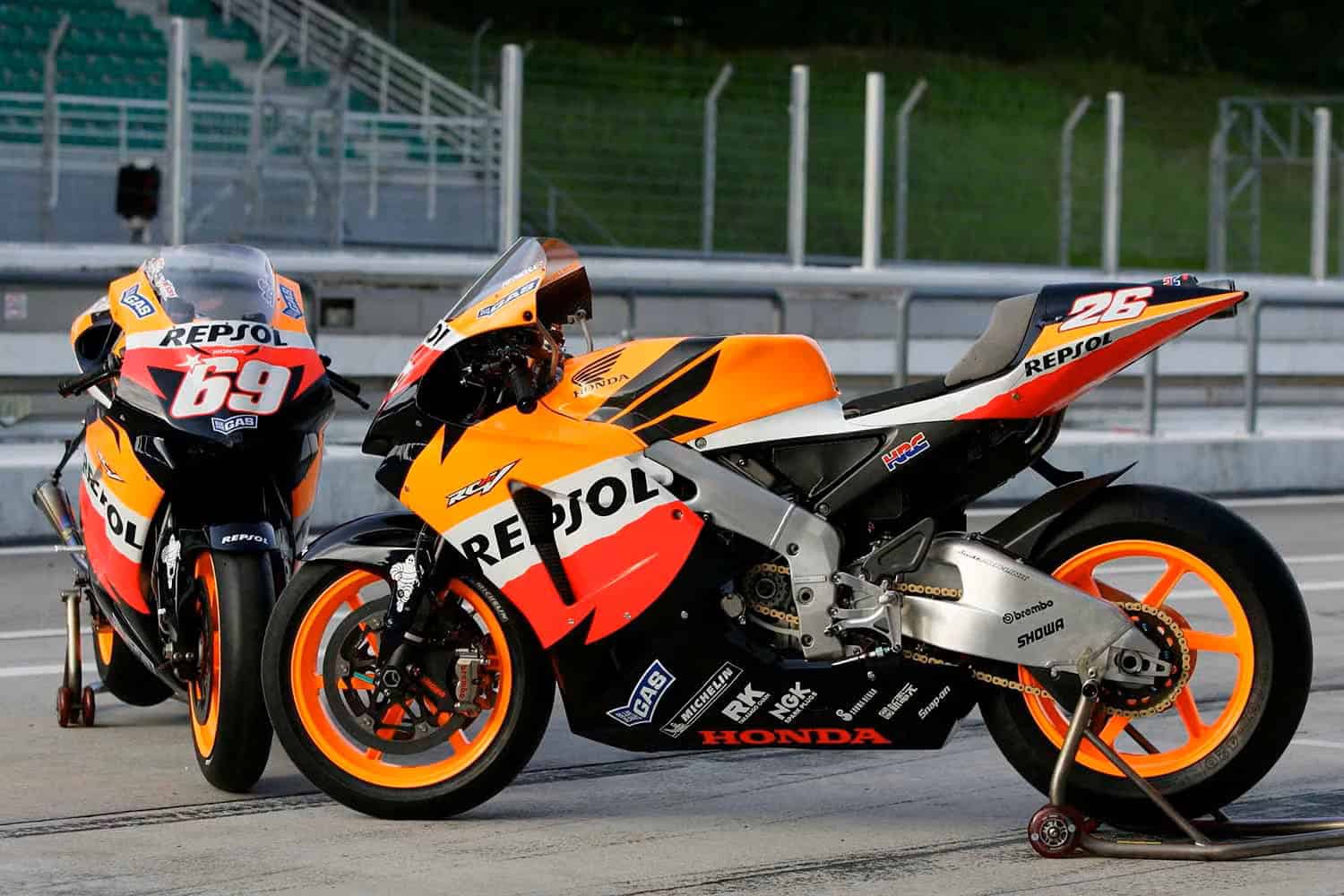
💡 Upgrading your chain? You might also like our Best Motorcycle Accessories roundup for easy performance and comfort upgrades that actually make a difference.
5. Master Link Type
Chains come with either clip‑style or rivet‑style master links. Clip links are quick to install and sufficient for most street bikes up to about 800 cc. Rivet links are stronger and preferred for high‑horsepower machines or aggressive riding. If you’re nervous about installing a rivet link yourself, a local shop can handle it in a few minutes.
6. Maintenance Basics
Even sealed chains need regular care. Clean yours often to remove grit and old lube — a quality cleaner like Motul C1 is safe for O-ring, X-ring, and ZX-ring designs.
Once you’ve tackled chain care, keep your whole bike looking fresh with our Best Motorcycle Cleaner guide — it covers the safest products and methods for every finish.
After cleaning, apply a dedicated chain lube or wax. Spray evenly, wipe away excess to prevent fling, and check chain slack every 500–700 miles or twice a month. Over-tightening stresses bearings, while a loose chain risks derailment. O-ring and X-ring designs last longer, but they still wear out eventually.
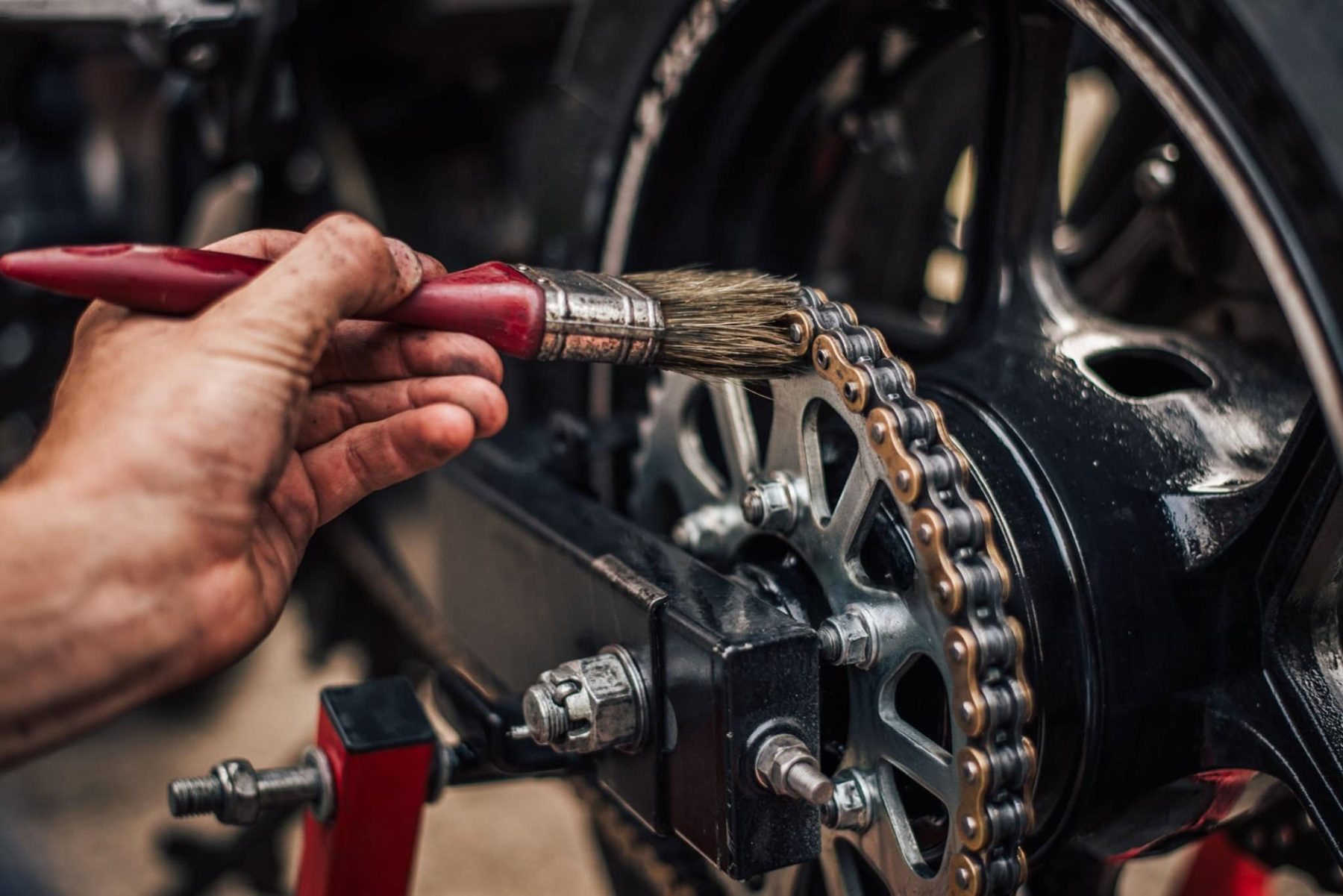
💡 Want to make your new chain last even longer? See our Best Motorcycle Chain Lubes of 2025 guide for the rider-tested picks that actually deliver.
Final Thoughts
The chain might not be a glamorous upgrade, but it’s one of the most important. It affects everything from throttle response to long‑term reliability. Choose a chain that matches your bike’s power, your riding style and your tolerance for maintenance.
Whether you’re looking for the lightest race chain or a reliable touring workhorse, the options above provide the best balance of strength, weight and longevity. Respect your chain, and your bike will reward you with smoother rides and fewer headaches.
Related
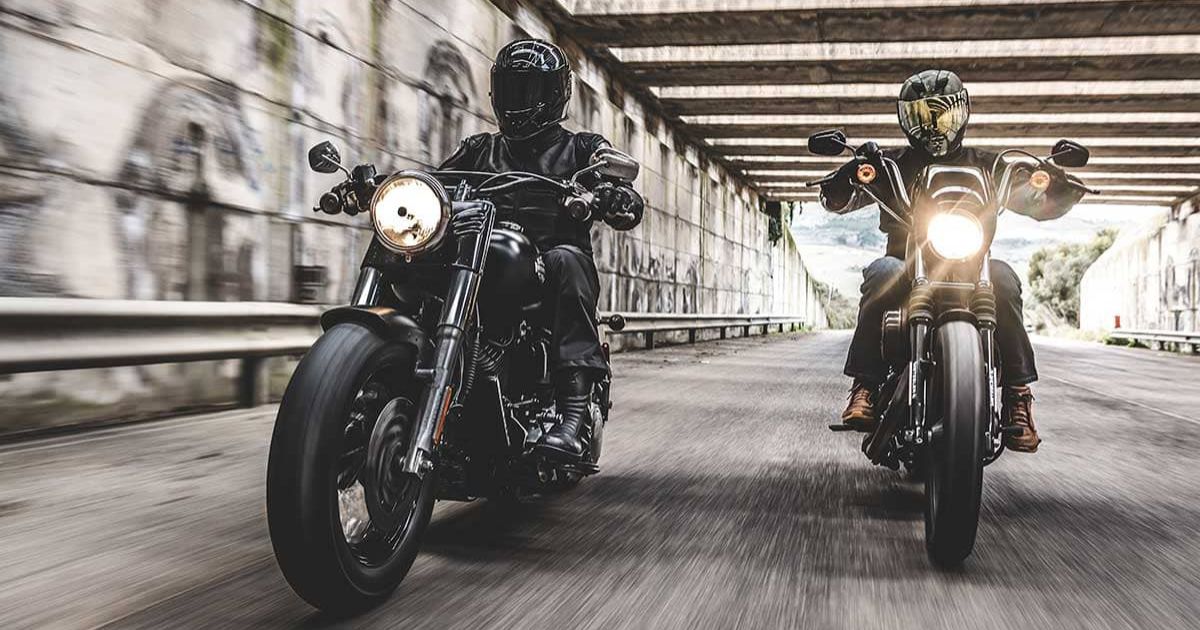
Best Cruiser Tires for Motorcycle Riders in 2025
Discover the best cruiser tires of 2025 for riders—tested for grip, comfort, mileage, and style to keep your V-Twin planted and confident.

